Tourism Meets Technology: LED Landmark Screens as Urban Attractions
Where Tourism and Technology Converge
Urban tourism has undergone a dramatic shift. In today’s digital era, travelers crave immersive experiences. They seek not only historical sites but also contemporary spectacles. One of the most transformative elements in this shift is the rise of city landmark LED displays.
Once seen as commercial or utility-based devices, large-format LED screens now play a critical role in shaping a city’s tourism identity. These technological marvels capture attention, deliver dynamic content, and blend art with architecture.
LED Displays as Modern-Day Landmarks
Traditionally, landmarks were monuments, towers, or squares. However, in modern cities, LED installations increasingly become focal points of public life. Whether wrapped around skyscrapers or mounted in cultural plazas, these digital structures serve as dynamic canvases.
Because they are visually commanding and continuously evolving, these displays create repeat visits. Tourists don’t just pass by—they film, photograph, and interact. A digital display becomes part of the city’s visual memory, often more shareable than stone monuments.
Global Examples Reshaping Urban Appeal
Several iconic examples illustrate how city landmark LED displays have transformed tourism. For instance, Shibuya Crossing in Tokyo features massive, synchronized LED walls that attract millions annually. Similarly, New York’s Times Square remains a global tourist hotspot largely due to its luminous LED ads and live media feeds.
In Seoul, interactive LED installations allow visitors to engage with digital art in real time. In Dubai, 3D naked-eye displays present illusions that seem to leap into the street. These installations do more than inform—they mesmerize.
 Why LED Technology Resonates with Tourists
Why LED Technology Resonates with Tourists
LED technology captures attention more effectively than static signage. Brightness, color range, and motion contribute to its psychological impact. When integrated into landmark locations, LED screens amplify emotional engagement.
They also align with modern behavior. Travelers frequently use smartphones and social media to capture experiences. LED landmark displays, due to their spectacle and constant change, provide ideal subjects for content creation.
Moreover, the multilingual capabilities of digital screens allow global visitors to receive real-time information in their native languages. Whether displaying directions, public alerts, or cultural showcases, these screens reduce friction for international tourists.
Day-to-Night Appeal: A 24-Hour Tourist Draw
Unlike many monuments that fade into darkness, LED displays enhance their visibility at night. This 24-hour operation transforms public squares into nighttime gathering spots. Evening light shows, countdowns, and digital fireworks engage both tourists and locals.
Urban centers benefit economically by encouraging longer dwell times and increased spending in adjacent commercial zones. Surrounding restaurants, souvenir shops, and entertainment venues often see measurable traffic spikes driven by LED-attracted footfall.
Interactivity and Immersive Experiences
Static viewing is no longer enough. Tourists now expect interaction. Advanced LED screens support touch-sensitive panels, motion sensors, and camera-based engagement. Visitors can participate in public art, control animations, or appear in real-time projections.
For example, in Singapore’s Marina Bay, a waterfront LED installation invites users to paint digital murals using hand gestures. In Barcelona, city walls light up with crowd-sourced photos submitted through mobile apps. These experiences not only enrich tourism but also promote civic pride.
Cultural Storytelling Through LED Display
Modern cities are rich in history, yet traditional markers can appear inaccessible to global visitors. LED displays bridge this gap. Through curated media, cities can broadcast their heritage in captivating, multilingual formats.
Digital storytelling via LED boards can honor local festivals, play cultural documentaries, or even animate historic legends. When strategically positioned in key tourist areas, such content deepens understanding and appreciation for the city’s identity.
At Madder, our modular LED systems allow flexible installations in both historic and contemporary zones. We ensure aesthetic harmony while introducing digital layers to cultural spaces.
Sustainable and Smart Integration
Urban planners are increasingly tasked with balancing innovation and sustainability. Fortunately, LED display systems have evolved to meet green criteria. High-efficiency LEDs, adaptive brightness sensors, and solar-powered units reduce carbon footprints.
Furthermore, city landmark LED displays now link with IoT platforms and smart grids. This connectivity enables real-time updates, emergency alerts, and energy optimization. As smart cities grow, LED displays become essential nodes within intelligent infrastructure.
Commercial Impact on Local Economies
While designed as tourism enhancements, landmark LED screens also open revenue channels. Governments can lease display space to advertisers while allocating time for public messaging. In tourism-heavy zones, campaigns for local events, cultural sites, and small businesses thrive on these visual platforms.
Cities report increased visitor engagement with museums, concerts, and walking tours promoted on these displays. By integrating tourism boards into content rotation, cities make these digital landmarks function as both art and commerce tools.
Planning Considerations for LED Landmark Projects
Installing such displays requires extensive collaboration. Urban architects, cultural agencies, and tourism boards must align on purpose, content, and aesthetic fit. LED screens should not overpower heritage but rather enhance the surrounding experience.
Madder supports clients through every phase—from structural engineering to content consultation. Our team works to ensure seamless integration, meeting both safety and visual standards. Our waterproof, sunlight-resistant, and modular panels adapt to diverse climates and architectural forms.
Regional Trends and Market Drivers
Asia-Pacific
This region leads in LED adoption. China, South Korea, and Japan deploy digital displays at scale. Cities in Southeast Asia follow with cultural lighting shows powered by tourism initiatives.
North America
Major cities focus on experiential tourism. Interactive displays in New York, Chicago, and Las Vegas combine commercial media with cultural programming. LED landmarks here double as event backdrops and social content generators.
Europe
Cultural sensitivity dictates subtle integration. Many LED projects in Europe involve artistic collaborations or eco-conscious architecture. Municipal support depends on sustainability and noise-light mitigation.
Middle East
Cities like Dubai position LED screens as tourist magnets. Their integration into malls, airports, and resorts enhances luxury positioning. Creative design and 3D illusions dominate the aesthetic.

The Future of LED Landmarks in Tourism
The coming decade will see deeper synergy between tourism and digital infrastructure. With advances in AR, 5G, and gesture control, LED displays will offer even more personalized experiences.
Imagine walking into a square and seeing your name in lights, or watching an AI avatar greet visitors in your language. LED landmarks will host real-time events, environmental data, and gamified city explorations. They will not only attract but also guide, educate, and entertain.
Moreover, as green mandates grow, Madder is committed to developing recyclable panels and self-regulating energy systems that align with urban climate goals.
Conclusion: Technology as a Cultural Bridge
In summary, city landmark LED displays redefine how we experience urban tourism. They blend utility with creativity, transforming public spaces into immersive destinations. For tourists, they offer wonder. For cities, they offer economic vitality and global branding.
At Madder, we don’t just build screens—we build attractions. Our LED display solutions adapt to every environment, enrich every visit, and tell every story.
Partner with us to turn your city’s next landmark into a living, breathing digital masterpiece.

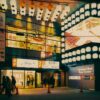
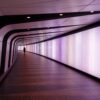
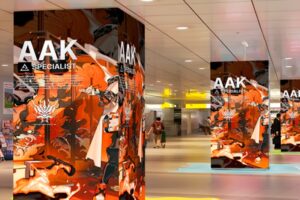
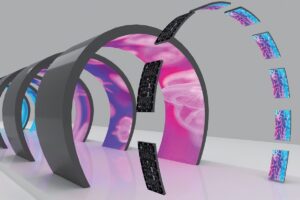
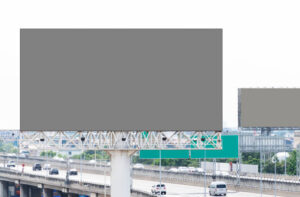


Leave a reply